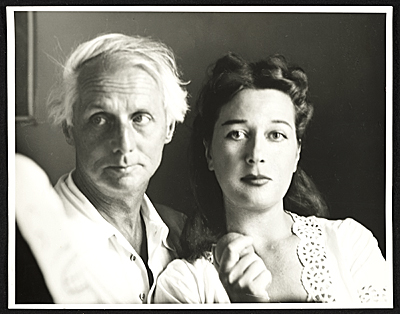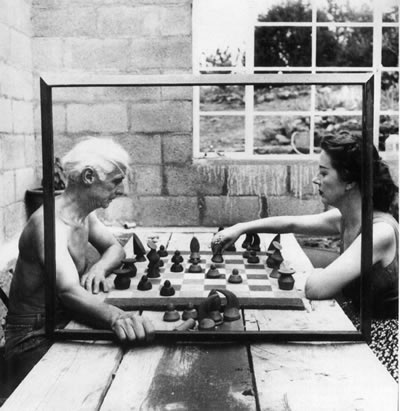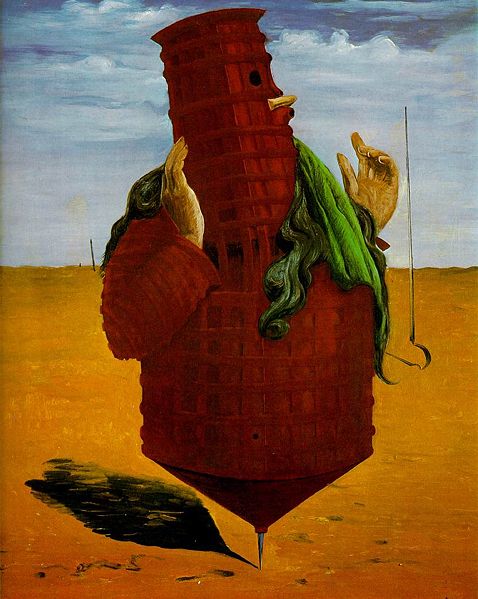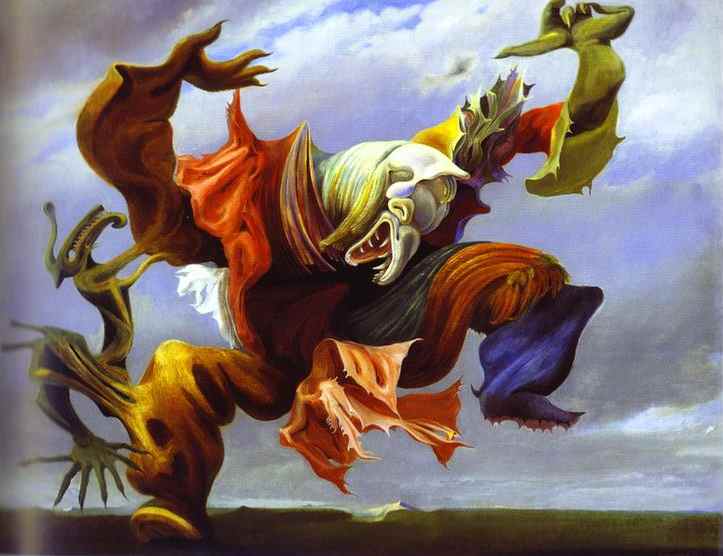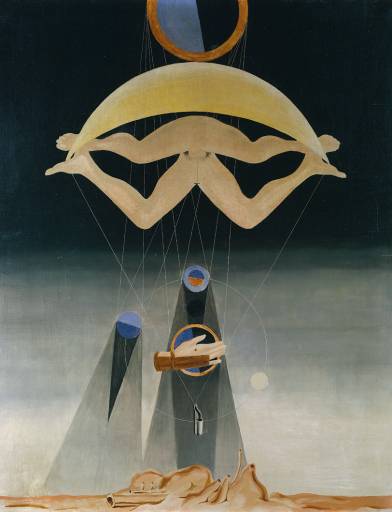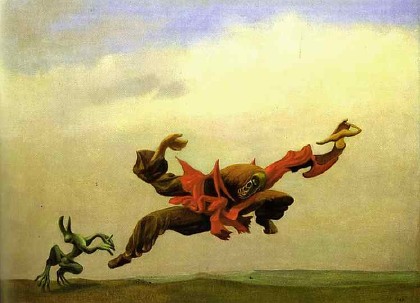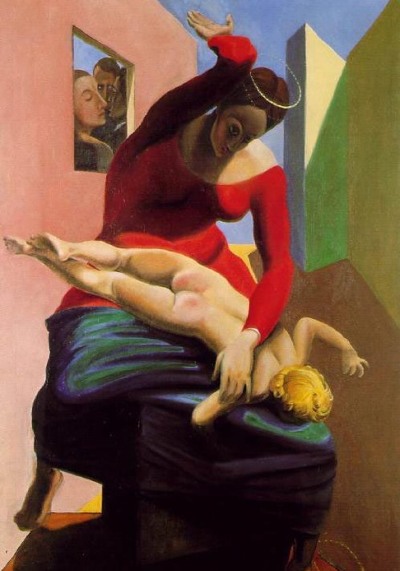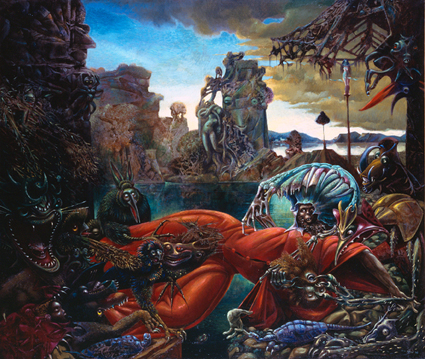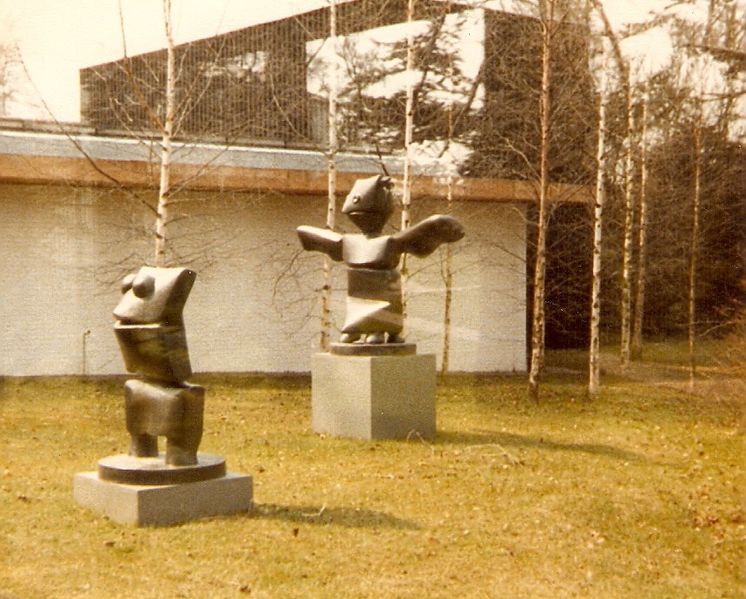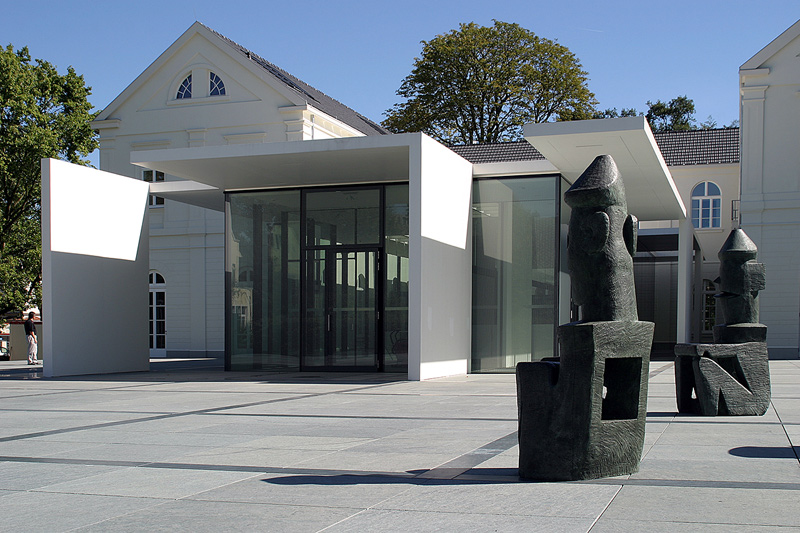<Back to Index>
- Physicist Francesco Maria Grimaldi, 1618
- Painter Max Ernst, 1891
- Consort to the British Monarch Prince George of Denmark, 1653
PAGE SPONSOR

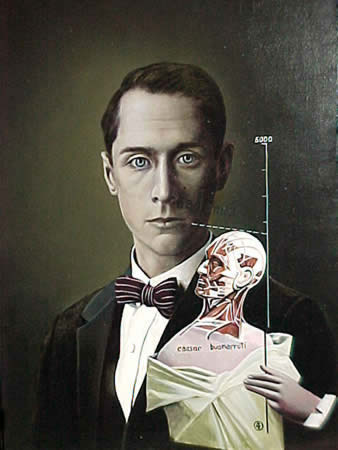
Max Ernst (2 April 1891 – 1 April 1976) was a German painter, sculptor, graphic artist, and poet. A prolific artist, Ernst is considered to be one of the primary pioneers of the Dada movement and Surrealism.
Ernst was born in Brühl, Germany, near Cologne. In 1909, he enrolled in the University at Bonn to study philosophy but soon abandoned the courses. He began painting that year, but never received any formal artistic training. During World War I he served in the German army, which was a momentous interruption in his career as an artist. He stated in his autobiography, "Max Ernst died the 1st of August, 1914."
After the war, filled with new ideas, Ernst, Jean Arp and social activist Alfred Grünwald formed the Cologne, Germany Dada group. In 1918 he married the art historian Luise Straus — a stormy relationship that would not last. The couple had a son who was born in 1920, the artist Jimmy Ernst. (Luise died in Auschwitz in 1944.) In 1919 Ernst visited Paul Klee and created paintings, block prints and collages, and experimented with mixed media.
In 1922, he joined fellow Dadaists André Breton, Gala, Tristan Tzara, and Paul Éluard at the artistic community of Montparnasse. Constantly experimenting, in 1925 he invented a graphic art technique called frottage, which uses pencil rubbings of objects as a source of images. He also created another technique called 'grattage' in which paint is scraped across canvas to reveal the imprints of the objects placed beneath. He uses this technique in his famous painting 'Forest and Dove' (as shown at the Tate Modern).
The next year he collaborated with Joan Miró on designs for Sergei Diaghilev. With Miró's help, Ernst pioneered grattage in which he troweled pigment from his canvases. He also explored with the technique of decalcomania which involves pressing paint between two surfaces.
Ernst developed a fascination with birds
that was prevalent in his work. His alter ego in paintings, which he
called Loplop,
was a bird. He suggested this alter ego was an extension of himself
stemming from an early confusion of birds and humans. He said that one
night when he was young he woke up and found that his beloved bird had
died, and a few minutes later his father announced that his sister was
born. Loplop often appeared in collages of other artists' work, such as Loplop presents André Breton. Ernst drew a great deal of controversy
with his 1926 painting The Virgin Chastises the infant Jesus
before Three Witnesses: André Breton, Paul Éluard, and
the Painter. In
1927 he married Marie-Berthe Aurenche, and it is thought his
relationship with her may have inspired the erotic subject matter of The Kiss and other works of this year. In 1930, he appeared in the film L'Âge d'or, directed by self-identifying Surrealist Luis
Buñuel. Ernst began to
make sculpture in 1934, and spent time with Alberto
Giacometti. In 1938, the
American heiress and artistic patron Peggy
Guggenheim acquired
a number of Max Ernst's works which she displayed in her new museum in
London. Ernst and Peggy Guggenheim were also married to one another
from 1942 to 1946. In
1938 he was interned in Camp des Milles,
near Aix-en-Provence,
along with fellow surrealist, Hans Bellmer,
who had recently emigrated to Paris on the outbreak of World War II.
Thanks to the intercession of Paul
Éluard, and other friends including the journalist Varian Fry he
was discharged a few weeks later. Soon after the Nazi occupation of
France, he was arrested again, this time by the Gestapo, but managed to
escape and flee to America with the help of Guggenheim. He left behind his lover, Leonora
Carrington,
and she suffered a major mental breakdown. Ernst and Guggenheim arrived
in the United States in 1941 and were married the following year. Along
with other artists and friends (Marcel Duchamp and Marc Chagall)
who had fled from the war and lived in New York City, Ernst helped
inspire the development of Abstract
expressionism. His
marriage to Guggenheim did not last, and in Beverly Hills,
California in
October 1946, in a double ceremony with Man Ray and Juliet P. Browner, he
married Dorothea Tanning.
The couple first made their home in Sedona, Arizona.
In 1948 Ernst wrote the treatise Beyond
Painting. As a result of the publicity, he began to achieve
financial success. In
1953
he and Tanning moved to a small town in the south of France where
he continued to work. The City, and the Galeries Nationales du
Grand-Palais in Paris published a complete catalogue of his works. In
1966 he created a chessgame made of glass which he named "Immortel"; it
has been described by the poet André Verdet as Ernst died on 1 April 1976, 1 day before
his birthday, in Paris. He was interred at the Père
Lachaise Cemetery. Max
Ernst's life and career are the subject of Peter Schamoni's 1991 documentary Max Ernst. Dedicated
to the art historian Werner Spies,
it
was assembled from interviews with Ernst, stills of his paintings
and sculptures, and the memoirs of his wife Dorothea Tannning and son
Jimmy. The 101-minute German film was released on DVD with English
subtitles by Image Entertainment. In
2005, "Max Ernst: A Retrospective" opened at the Metropolitan
Museum of Art and
included works such as Celebes (1921), Ubu Imperator (1923), and Fireside Angel (1937), which is one of the
few definitively political pieces and is sub-titled The Triumph of Surrealism depicting a raging
bird-like creature that symbolizes the wave of fascism that
took over Europe. The exhibition also includes Ernst's works that
experiment with free association writing and the techniques of frottage,
created from a rubbing from a textured surface; grattage,
involving scratching at the surface of a painting; and decalcomania,
which involves altering a wet painting by pressing a second surface
against it and taking it away. Ernst's son Jimmy, a well known German/American abstract
expressionist painter, who lived on the south shore of Long
Island, died in 1984. His
memoirs, A Not-So-Still Life, were published shortly before his
death. His grandson Eric and granddaughter Amy are both artists and
writers.
